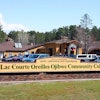Community and tribal colleges would receive $5 billion for construction projects under President Obama’s new jobs plan, which also could shore up state education budgets and provide post-secondary job training opportunities for the unemployed.
Unveiling a $447 billion American Jobs Act before Congress last Thursday, the president called for action “to put more people back to work and more money in the pockets of those who are working.” In addition to education funds, the plan contains a bevy of tax breaks to hire veterans and the unemployed and new funds to help at-risk teens and young adults find work.
For higher education, the main source of funding is the community college construction initiative proposed at $5 billion. In briefing reporters on details of the plan Friday, administration officials said funding would flow from the federal government to states based on their community college enrollments. States then could allot funds based on campus and system needs.
“We’re heartened to see the money for facilities,” said Jim Hermes, government relations director at the American Association of Community Colleges (AACC). “The recognition has been there for a long time, and there is still a major need,” he told Diverse.
Obama’s plan comes on the heels of two earlier college construction proposals that failed to gain congressional approval. The White House initially sought to fund college construction in the 2009 economic stimulus bill and then under its American Graduation Initiative. Congress rejected the plan both times.
Hermes said the new plan may face an uphill climb on Capitol Hill and noted that the two-year sector will vigorously fight for enactment. “We all know the political climate isn’t favorable to new spending,” he said. “But we’re going to have to make the case.”
Since the president has proposed similar initiatives in the past, most states have compiled a list of the most pressing construction needs at two-year colleges, many of which have seen large enrollment increases since the 2008 financial crisis.
Hermes said most states “have identified capital projects and would be able to fund down their lists” with new federal funds.
In releasing more details of its plan, the White House said community and tribal colleges have $100 billion in deferred maintenance needs.
The president’s plan also contains $25 billion for construction of K-12 education facilities. Education Secretary Arne Duncan said the typical U.S. public school building is more than 40 years old and many lack the infrastructure for new technology.
“The hard truth is that a number of nations are now out-educating the U.S., and the antiquated conditions of many public schools are limiting children’s access to the 21st century tools and skills needed to compete in a knowledge economy,” he added. Public schools, he said, have a backlog of $270 billion of deferred maintenance and repairs, with poor districts having the greatest needs.
Charter schools could receive funds under the $25 billion K-12 construction initiative. However, the plan would steer 40 percent of all funds toward the 100 largest high-need school districts, the White House said.
Obama’s plan also would earmark $35 billion to prevent layoffs of teachers and other public sector workers. According to the White House, 280,000 teacher jobs are at risk due to state and local budget cuts. The funds would help states and localities fund jobs not only for teachers but also for guidance counselors, classroom assistants and academic coaches.
Another priority is to address growing unemployment among teens and young adults. The plan has $5 billion so states can provide more summer jobs for low-income youth and year-round employment for young adults in poverty. In noting the crisis facing this age group, the White House said only 34 percent of African-Americans ages 16 to 24 are working.
The initiative, called Pathways Back to Work, also could help more youth and young adults gain job-related training, something that Hermes said could include community colleges. “We would expect to be part of that,” he told Diverse.
Elsewhere, the Obama initiative would:
n Extend payroll tax cuts for individuals and offer businesses a payroll tax holiday for adding workers.
n Provide businesses with a $4,000 tax credit for hiring the long-term unemployed and a credit up to $9,600 for hiring unemployed veterans.
n Funding $50 billion in infrastructure improvements focused on bridges, highways, rail transportation and airports.
Obama will send the plan formally to Congress this week. There is no timetable yet for consideration by Congress, though Republicans have criticized the plan.
“More stimulus spending is not the right solution to our nation’s jobs crisis,” said Rep. John Kline, R-Minn., chairman of the House Education and the Workforce Committee. “Common sense tells us that putting the federal government in the business of school construction will only lead to higher costs and more regulations.”
Instead, he said Republicans would focus on reducing the federal role in classrooms, “streamlining” education spending and promoting innovation.





















